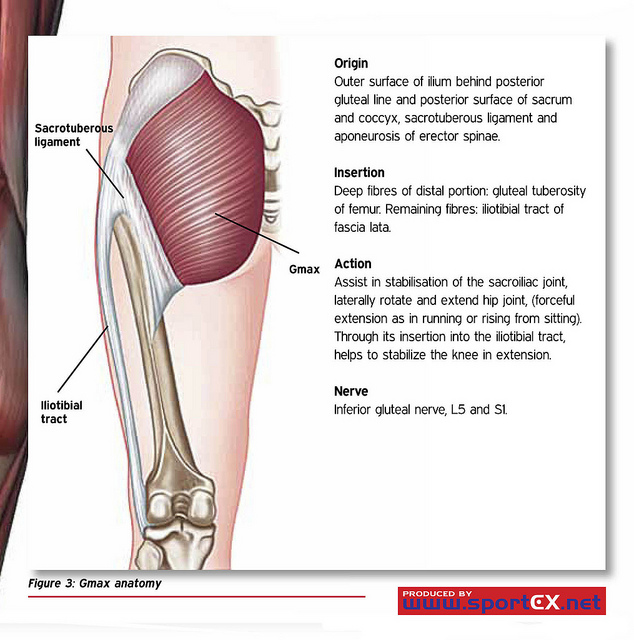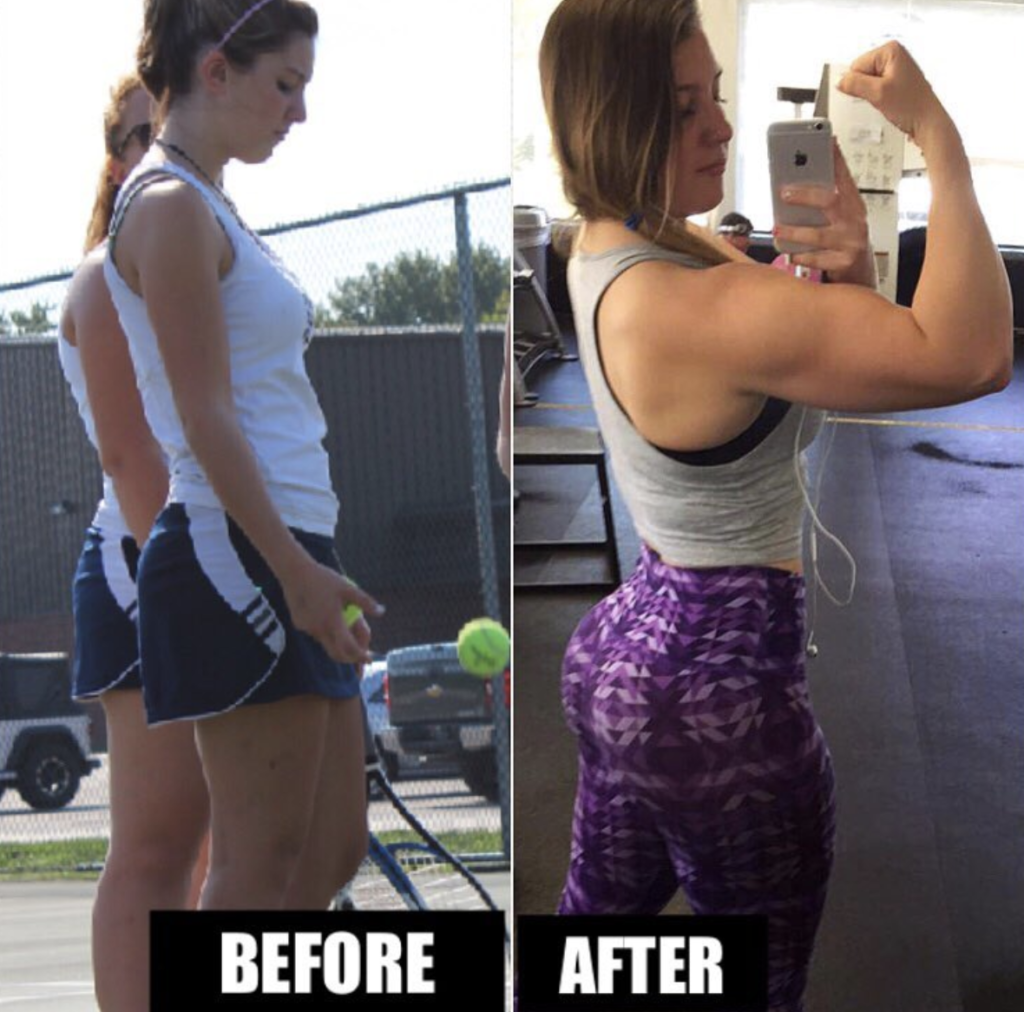Remember when everyone said squats were the best exercise for building your glutes? Forget what you know. Today we’re going to dig into some human anatomy, break down the function of the squat, the glutes, and explain why it’s a controversial topic to begin with.
Editor’s note: This article is an op-ed. The views expressed herein and in the video are the author’s and don’t necessarily reflect the views of BarBend. Claims, assertions, opinions, and quotes have been sourced exclusively by the author.
What Is the Function of the Glutes?
To begin, its important to know the origin and insertions of these muscles. This tells us where the muscles start and end. It’s important to understand, as this lets us know how the muscle will contract and which exercises will do this most effectively.
When talking about the gluteus maximus (the largest of your glute muscles), your origin is at the outer ilium of the pelvis, posterior side of the sacrum and coccyx, and part of the sacrotuberous and posterior sacroliliac ligament. Your insertion is at the gluteal tuberosity of the femur and iliotibial tract.
The function of your glute max is to concentrically accelerate hip extension and to perform external rotation. When you contract a muscle, it’s going to bring the locations — the origin and insertion — closer together.

For example, your glutes are completely inactive while sitting, which you can imagine when you see that the distance from the origin and insertion are further apart than if you were in a neutral, standing position. People who have desk jobs are seen with extremely inactive glutes even in neutral positions due to this. Your glutes would become more active, lets say, if you were to walk up the stairs to get to work. As you’re moving, your glutes contract and the origin and insertion are brought closer together during this movement.
Movements such as these contribute to building stronger and more active glutes, but this doesn’t necessarily mean they’re the best exercises for your glutes.
How Can We Test Glute Activity In a Squat?
We’ve heard several arguments claim that the squat is the king of all glute exercises, but how do we prove or disprove this?
The best way to show muscle activation in an exercise is expressed through %MVC (percentage of maximal voluntary contraction) in EMG data. In simple terms, this means that it shows what percent of the muscle is activated during the exercise. The most optimal exercise for activation will be shown at 100%.
Although EMG shows muscle activation, it doesn’t show muscle fiber recruitment. Despite this, it is theorized that higher activation means higher muscle recruitment, implying greater hypertrophy also known as muscle growth.
An easy way to explain the difference between activation and recruitment is to imagine a room. There are several lights in the room. You can turn the lights on, off, or even dim them. That would be similar to activation. You can tell if a muscle is 30% activated in an exercise, 70% activated, completely activated, or not at all.
https://www.instagram.com/p/BftpVVEhs9P/
Now imagine that there are several lights in the room. You can adjust the lights with the light switch, but you can’t tell which lights are being used. Are some partially being used in the beginning and then others taking over halfway through? Are the same lights being used the entire time while others aren’t used at all?
This example is similar to the difference between muscle activation and recruitment. With EMG, you can’t tell which fibers are being recruited, because although it may show there is a high activation of that muscle, there may not be a high activation of recruitment of all of the fibers in and of themselves.
All this really means is that we don’t know with 100% certainty which exercises are better than others when exercises with similar activation are compared. This is because there are several other factors that come into play when it comes to hypertrophy, including the muscle fiber recruitment (which can be affected by time under tension, volume, intensity, etc). This is why this has been seen as a controversial topic.

Despite this, we do know which exercises prove higher activation and, because there is a correlation between activation and hypertrophy, we can assume that the exercises with higher muscle activation provide better results in growing the glutes.
The answer is no. EMG activity shows that, despite the glutes being important to perform a squat effectively, glute EMG activity is less active in comparison to other exercises we’ve found.
Glute activity ranges from as low as 17-70% MVC, whereas you can see the quads (vastus lateralis) range from 47-100% MVC for activation during the back squat.
What Are the “BEST” Exercises for Glute Activation?
In my opinion, the best exercises for building your glutes are hip thrusts, glute bridges, weighted glute kickbacks, and back extension. Is this an end all be all list? No, but these always rank near the top for myself!
https://www.instagram.com/p/BoZvH9mhawJ/
Now, this doesn’t mean you should avoid squats if your goal is for bigger and stronger glutes. In fact, I personally suggest that you incorporate a variety of these exercises in your routine for optimal results. In your glute-focused workouts, not only should you incorporate a variation of the above exercises, but you should also incorporate a squat and deadlift variation as well.
Although squats may not be the top exercise for glutes, there are ways to make sure you’re activating your glutes more effectively, especially in today’s world where most people are seated and have trained their glutes to become inactive.
Read More: Best Glutes Exercises
How Can we Activate the Glutes More In a Squat?
If you consider yourself inactive, then you more than likely have inactive glutes as well. Mobility and activation exercises are one of the best ways to build up your glute strength again. I suggest doing these corrective exercises before doing any barbell or resistance training.
Some of my favorite warm-up exercises to activate the glutes before your squat sessions are banded abductor lateral walks, banded monster walks, banded squats, and banded glute bridges. All of these exercises should be light weight and used to “wake up” the muscle. Your goal here is nothing else, but to to prepare your body for more strenuous exercise and get blood flow to your glutes, so be sure to only use light bands or light weights.
Choosing which variation of squat to perform will also make a difference in glute activation. For example, the most optimal squat variation is going to be a wider stance squat with your knees and toes slightly pointed outwards. The reason for this is because increased hip abduction requires more glute activation.
Once you go to squat, make sure that you are completely contracting or squeezing your glutes at the top of the squat and fully hitting depth (going to parallel or just below without losing tension) at the bottom of the squat.
To sum it all up, although squats aren’t the best exercise to train your glutes, they can be made more effective by doing exercises such as hip thrusts, glute bridges, kickbacks, and back extensions. I suggest incorporating all of these exercises into your training program for the best results.
Feature image from @lexesohara Instagram page.